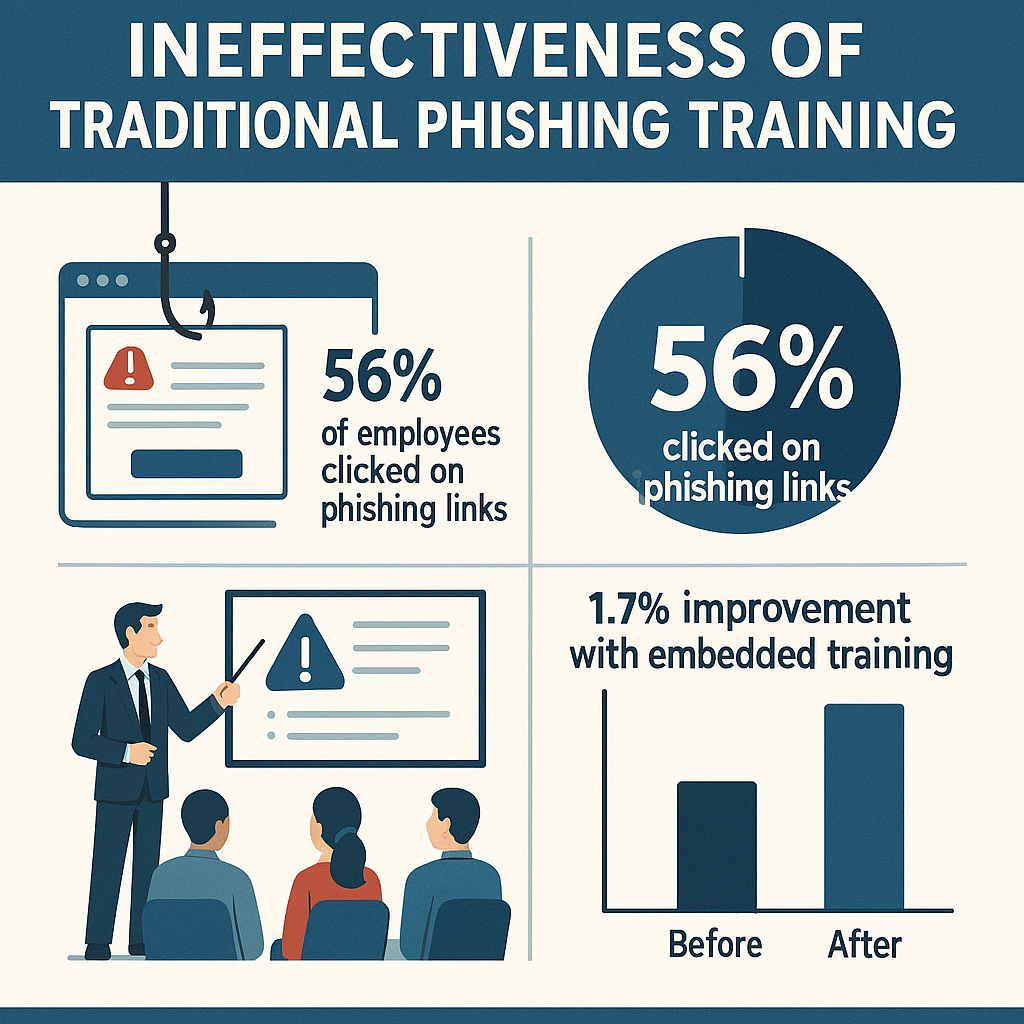Phishing Training Ineffective: New Study Reveals Minimal Impact on Employee Security Awareness
Phishing Training Ineffective: New Study Reveals Minimal Impact on Employee Security Awareness
In the ever-evolving landscape of cybersecurity, organizations have long relied on phishing training to bolster employee defenses against malicious attacks. However, a recent comprehensive study challenges the efficacy of such traditional training methods, revealing that they may not significantly reduce employees’ susceptibility to phishing attempts.
Understanding the Study
Conducted over an eight-month period, the study involved ten simulated phishing campaigns targeting over 19,500 employees within a major U.S. healthcare organization. The research aimed to assess the impact of various cybersecurity training approaches on employees’ ability to recognize and avoid phishing threats.
Key findings included:
- Employees who had recently completed cybersecurity awareness training showed no significant improvement in avoiding phishing attempts.
- Those who underwent multiple static training sessions were actually more likely to fall victim to phishing attacks.
- A marginal improvement of 1.7% was observed in employees who received embedded phishing training—real-time interventions provided immediately after a phishing click.
The Limitations of Traditional Phishing Training
Traditional phishing training often consists of scheduled sessions where employees are shown how phishing emails look and how to avoid them. While these sessions may raise short-term awareness, they fall short in several ways:
- Knowledge retention fades quickly.
- Training cannot keep pace with the evolving sophistication of phishing attacks.
- Employees may feel training is theoretical and fail to apply lessons in real situations.
This creates a gap between training knowledge and real-world application, leaving organizations vulnerable.
The Promise of Embedded Phishing Training
Unlike static sessions, embedded phishing training provides immediate, context-driven feedback. When an employee clicks on a simulated phishing email, the system immediately intervenes, teaching the employee why the email was suspicious and how to avoid similar mistakes.
While the improvement in the study was only 1.7%, embedded training offers benefits:
- Reinforces behavior through instant feedback.
- Provides real-world learning experiences.
- Encourages employees to remain vigilant during daily tasks.
This model highlights that interactive and timely learning may be more effective than traditional awareness sessions.
Why Organizations Should Rethink Cybersecurity Training
The study demonstrates that simply conducting traditional phishing training sessions is not enough. Organizations must rethink their cybersecurity awareness strategy by:
- Adopting interactive training with real-world scenarios.
- Focusing on continuous learning instead of one-time sessions.
- Building a culture of security where vigilance is part of daily workflow.
Cybercriminals constantly refine their tactics, so training methods must evolve accordingly.
Conclusion: Why Phishing Training is Ineffective Without Innovation
While traditional phishing training has long been considered a standard defense, research now shows it does not significantly reduce employee vulnerability. Organizations should explore embedded phishing training and dynamic learning approaches to better prepare their workforce. By doing so, they can strengthen resilience against one of the most common and damaging cyber threats.




Comments are closed